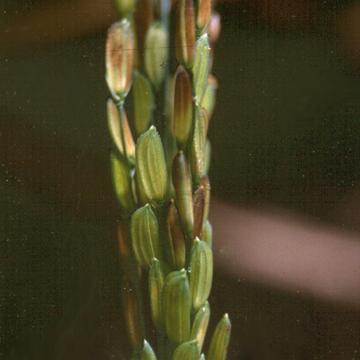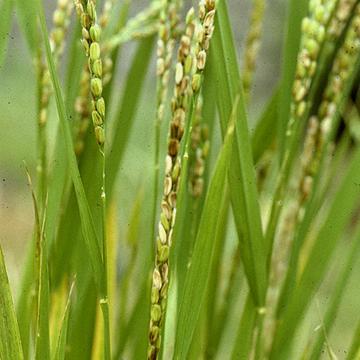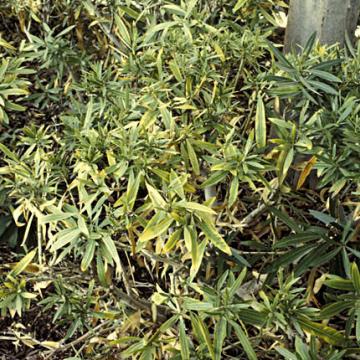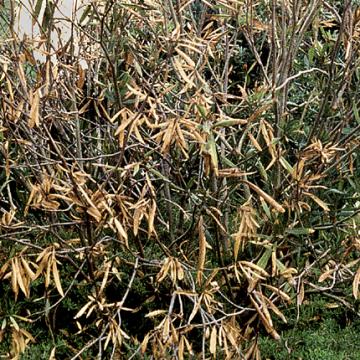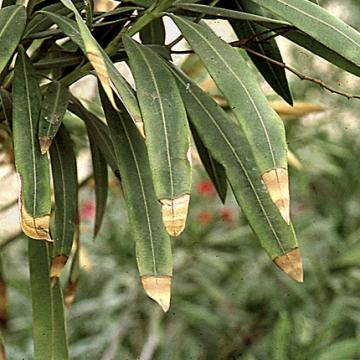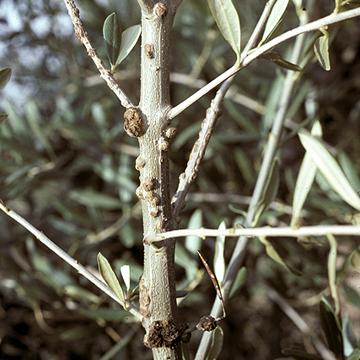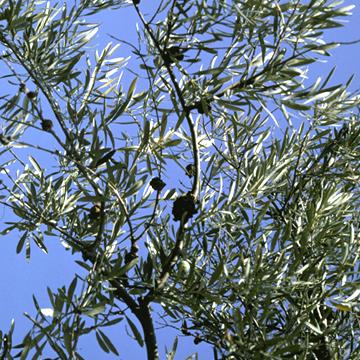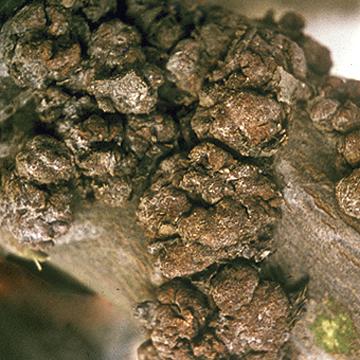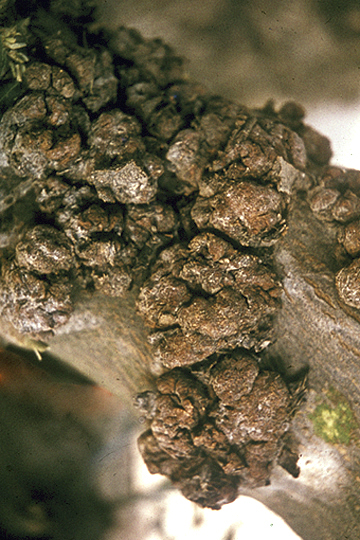DISEASE: Grain rot
HOST: Rice
Close-up of diseased grain. Infected portions of lemma and palea are purplish to dark brown.
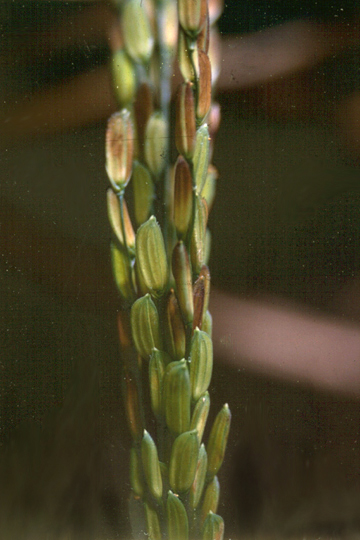
Grain rot | Rice
DISEASE: Grain rot
HOST: Rice (Oryza sativa)
PATHOGEN: Burkholderia glumae
PATHOGEN SYNONYM: Pseudomonas glumae
SOURCE: A. Alvarez, D. Shakya
DISEASE: Grain rot
HOST: Rice
Discolored and withered hulls of infected panicles. A brown margin between the infected and healthy parts of the grain is a diagnostic feature.
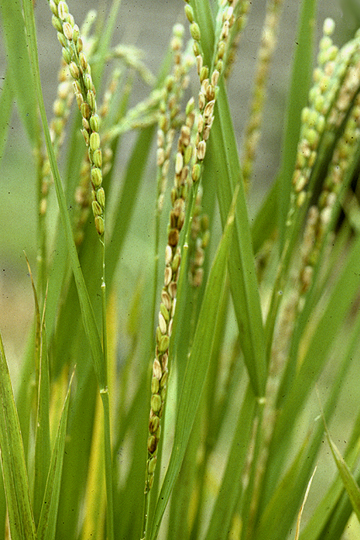
Grain rot | Rice
DISEASE: Grain rot
HOST: Rice (Oryza sativa)
PATHOGEN: Burkholderia glumae
PATHOGEN SYNONYM: Pseudomonas glumae
SOURCE: M. Goto
DISEASE: Oleander leaf scorch
HOST: Oleander
Diseased plant with scalloped, yellowish leaves. This usually is followed by dieback of twigs and branches. Plants often die 2 years after infection.
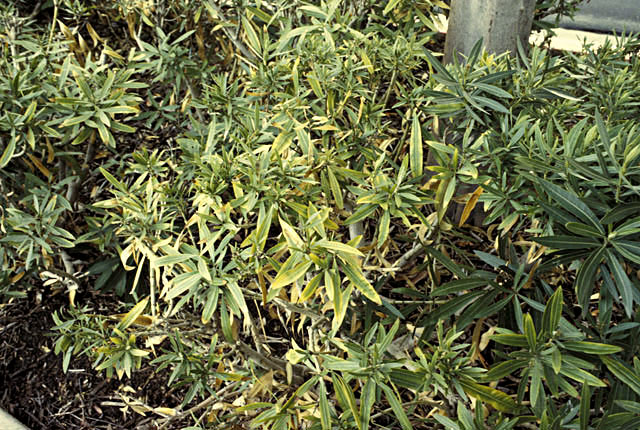
Oleander leaf scorch | Oleander
DISEASE: Oleander leaf scorch
HOST: Oleander (Nerium oleander)
PATHOGEN: Xylella fastidiosa
SOURCE: S. Purcell
DISEASE: Oleander leaf scorch
HOST: Oleander
Oleander with symptoms of severe scorch.
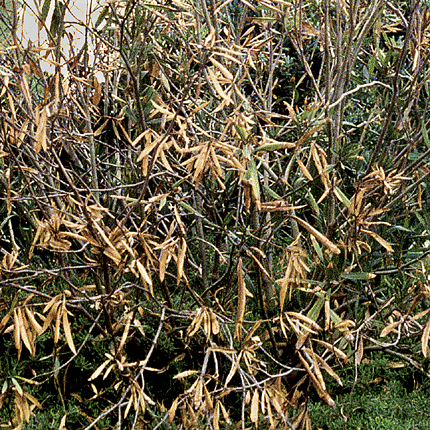
Oleander leaf scorch | Oleander
DISEASE: Oleander leaf scorch
HOST: Oleander (Nerium oleander)
PATHOGEN: Xylella fastidiosa
SOURCE: M. Blua
DISEASE: Oleander leaf scorch
HOST: Oleander
Oleander with scorch symptoms primarily at leaf tips, an early stage of disease.
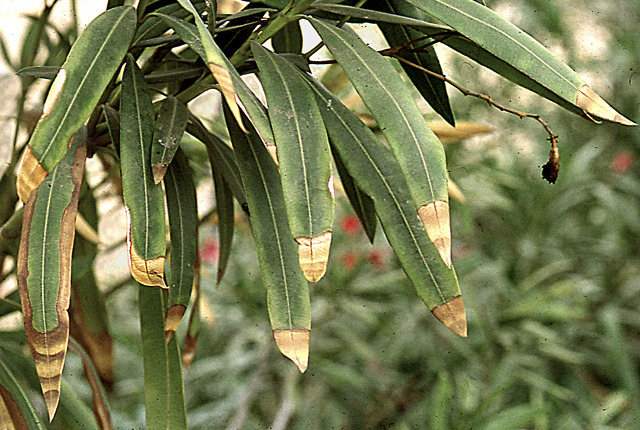
Oleander leaf scorch | Oleander
DISEASE: Oleander leaf scorch
HOST: Oleander (Nerium oleander)
PATHOGEN: Xylella fastidiosa
SOURCE: M. Blua
DISEASE: Olive knot
HOST: Olive
Multiple infections of young stems. The bacterium invades vascular tissues during certain times of the year and may be isolated from branches that appear healthy.
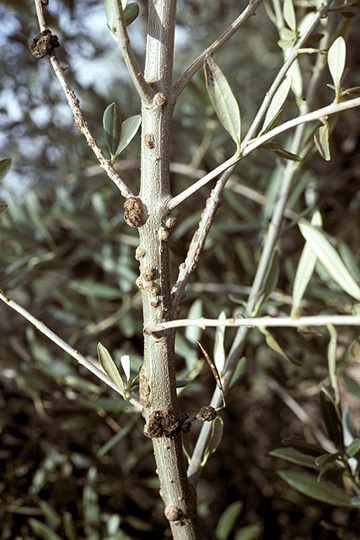
Olive knot | Olive
DISEASE: Olive knot
HOST: Olive (Olea europaea)
PATHOGEN: Pseudomonas savastanoi pv. savastanoi
SOURCE: M. Schroth
DISEASE: Olive knot
HOST: Olive
Tree with knots/galls on branches along with twig dieback, which is associated with knots. Fusarium and Diplodia spp. infect through knots and are thought to be main reason for dieback.
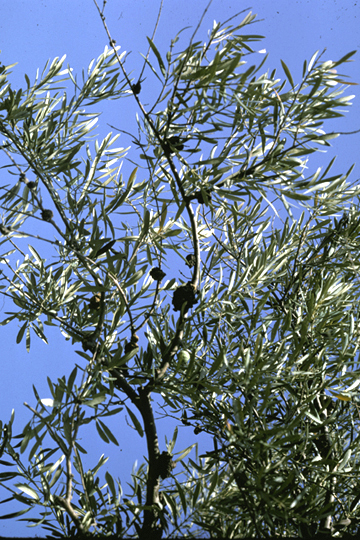
Olive knot | Olive
DISEASE: Olive knot
HOST: Olive (Olea europaea)
PATHOGEN: Pseudomonas savastanoi pv. savastanoi
SOURCE: M. Schroth


